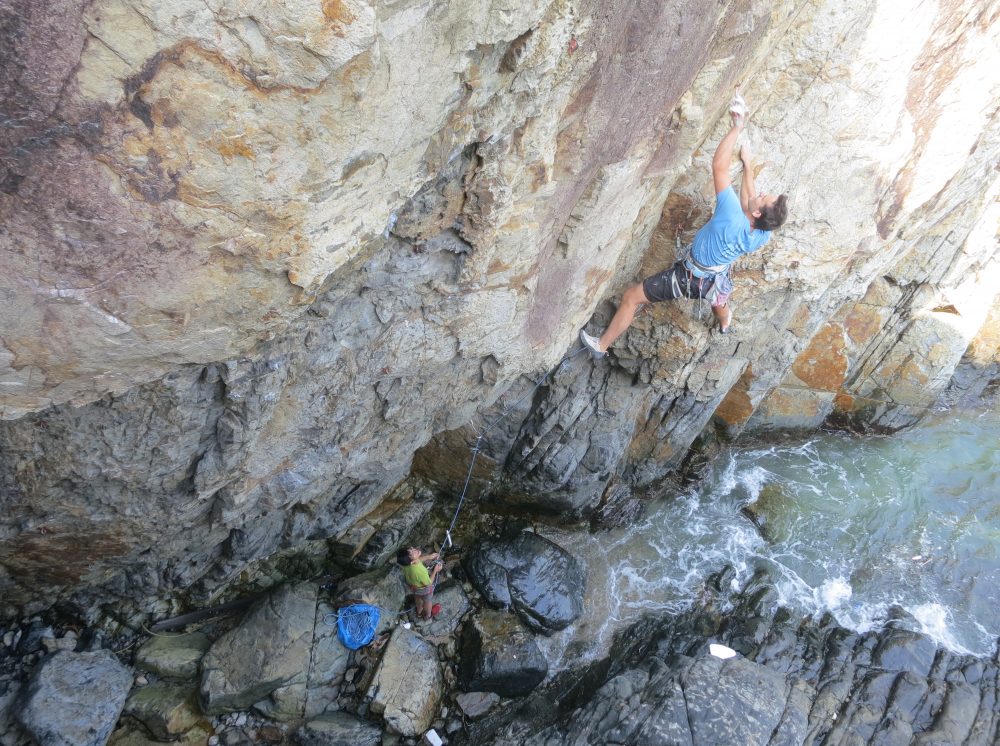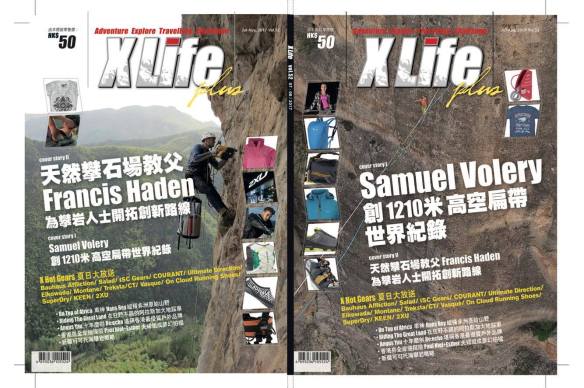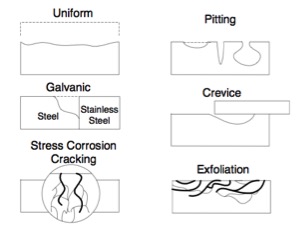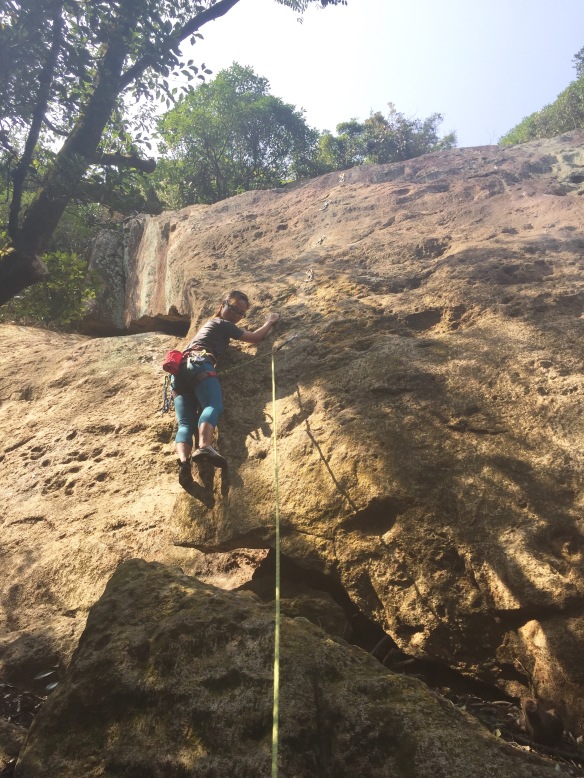Recently interviewed by the SCMP for an article and video regarding the climbing that Hong Kong has to offer.


Recently interviewed by the SCMP for an article and video regarding the climbing that Hong Kong has to offer.

A recent interview for a popular Chinese outdoor magazine and link to the pdf below. Hope your Chinese is good!
On 22nd April I travelled to Bangkok and delivered a presentation on bolting as a guest of the Bolting and Re-bolting in Central Thailand Group.
https://www.facebook.com/search/top/?q=bolting%20and%20rebolting%20in%20central%20thailand
The seminar covered a range of topics covering risk, bolt types, standards, corrosion and the materials from which certified bolts are manufactured. Key objectives of the seminar were to assist climbers in recognising suspect bolts and the need to be aware of whether bolts have failed before climbing in unfamiliar climbing areas.
This well attended event also provided the opportunity to discuss Stress Corrosion Cracking (SCC) via a question and answer session.
The current practice of both the UIAA 123 and EN 959 standards has been to leave anchor corrosion/SCC resistance as the responsibility of the manufacturers. However, numerous incidents of fixed rock climbing anchors failures mostly in seaside locations show that this approach is not optimal.
The Safety Commission of Union Internationale des Associations d’Alpinisme (UIAA) is preparing a new standard, which will classify anchors into classes according to their resistance to SCC and / or corrosion. The UIAA SafeCom working group consists of technical experts supported by regional volunteers around the globe who are providing failed bolt samples and also installing test cells of different bolts which are being monitored over time for corrosion behaviour.
Hong Kong is located within a region that has an elevated corrosivity potential and failed samples recovered during re-bolting work / catastrophic failures have been provided to the working group in recent years.
All samples of failed / corroded hardware were sent to the University of Chemical Technology in Prague where Tomas Prosek and his team conducted visual analyses at cross-sections using metallographic techniques and by scanning electron microscopy (SEM). Material chemical composition was verified by x-ray fluorescence (XRF) analyser, chemical composition of deposits and corrosion products determined by energy dispersive spectroscopy (EDX).

Example of a submitted sample recovered from Hour Glass Crack, Technical Wall, Tung Lung Chau.
Samples submitted included hangers, bolts and the cracked anchor set from Green Slab in Sea Gully.

Crevice corrosion occurred on all four analysed hangers, either under a washer or between a hanger and rock. There were branched cracks on two analysed hangers, one of them was completely torn after failure under 5 kN force (Hour Glass Crack). Cracking was observed also on both sleeves in a longitudinal direction of the bolts. Cross-section and SEM analysis after removal of corrosion products showed branched transgranular crack morphology.
The Green Slab anchor set featured a crack located 1–2 mm from the weld on the chain-link attached to one of the hangers that showed intergranular morphology, which suggests sensitization of heat affected zone during welding leading to intergranular corrosion or intergranular SCC.

SEM micrograph of transgranular fracture of cracked surface after corrosion product removal.
The conclusion from the preliminary report confirms that chloride presence was principal for the classical low-temperature chloride-induced SCC to occur and it is probable that concentration of chlorides in confined zones (e.g. behind hangers, washers and nuts) helped to initiate the SCC, at least in some cases. Crevice corrosion in this case occurs where salt solution (sea water) remains stagnant behind hangers.

Hong Kong geology can be very broadly defined as either volcanic tuff, or coarse grained granite, and neither rock type features magnesium in the concentrations required to form aggressive magnesium chloride based solutions that are found in limestone climbing areas like Tonsai. Super accelerated SCC is unlikely to be a problem for Hong Kong sport crags however the change in anchor type from multi component expansion bolt to a single piece glue-in bolt or adopting certified titanium glue-in bolts on sea side sport cliffs will reduce the rate of corrosion or in the case of titanium; eliminate it altogether.
Acknowledgement and thanks is extended to Alan Jarvis of the UIAA and Tomas Prosek and his team in Prague.
Several days of bush clearing and bolting have resulted in an easily accessible beginner level climbing area located adjacent to the well established Monkey Buttress on Hong Kong Island.
8 Routes up to 15m high were equipped using Bolt Products A4 glue-in bolts and Hilti RE500 epoxy.
Excellent rock quality, a sub 5 minute approach and appropriately geared routes make this an ideal venue for teaching new comers to the sport. A topo can be downloaded under the Guide Downloads page.
Thanks to Koh Ting Yi for partnering up on the first ascents.

Koh Ting Yi on the first ascent of ‘School Rule one’
Looking forward to meeting climbers and delivering a technical seminar in Bangkok in April as a guest of the Central Thailand Bolting Group.
Some of the topics under discussion will include the different types of bolts in use, safe installation, anchors, corrosion and best practice.

Effective risk management is an integral component of safe outdoor education in which participants can be exposed to risk within a controlled environment. For organisations engaged in outdoor activities such as rock climbing and abseiling, confidence in the integrity of fixed anchors used to facilitate rigging of top ropes and abseils is an absolute requirement.
Training provided to Outward Bound Hong Kong consisted of a 3 hour morning presentation covering ‘rock anchors for climbing’, adhesive type and chemistry, corrosion, standards and sustainable practices. Outdoor training comprised load testing to EN959 of existing pre-placed anchors, tensile extraction and diamond coring of selected historical placements before installing new Titan Climbing titanium resin bonded anchors in conjunction with Hilti RE 500 epoxy.

Extraction of a Fixe double wedge expansion bolt using diamond coring method
Tensile extraction of a loose (suspect) Petzl Collinox
Coverage of our most recent Kalymnos bolting trip and equipping of Prometheus
Prometheus, a brand new multi-pitch on the South Face of Telendos
Climber Magazine, UK runs the Hong Kong climbing article
climber-hk-article-1-of-3climber-hk-article-2-of-3climber-hk-article-3-of-3
My article covering the climbing in Hong Kong published in Vertical Life, Australia